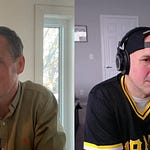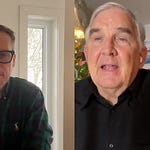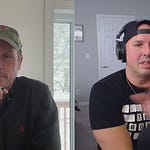It is difficult to pin down exactly how much of British Columbia government’s pharmaceutical “safer supply” is getting laundered into organized crime cash pools used to purchase fentanyl or trafficked directly into Canada’s population, including youthful drug abusers that can get their hands on government hydromorphone — known on the street as “Dillies” or “Smack” according to the D.E.A. — for a few bucks per tablet.
Two things are clear though.
Very significant amounts of taxpayer-funded Dillies are diverted into the holdings of drug gangs. And it isn’t politically feasible for B.C. police officers aware of these trends, to say so.
[Editor’s note: The video interview accompanying this Op/Ed was posted first to Break the Needle, a platform partnering with The Bureau on fentanyl crisis stories.]
On March 7, an RCMP detachment in the northern city of Prince George put out a press release saying:
“We have noted an alarming trend over the last year in the amount of prescription drugs located during drug trafficking investigations, noting they are being used as a form of currency to purchase more potent, illicit street drugs. Organized crime groups are actively involved in the redistribution of safe supply and prescription drugs, some of which are then moved out of British Columbia and resold. The reselling of prescription drugs significantly increases the profits realized by Organized Crime.”
The news led to a public spat between neighbouring Alberta and B.C. governments, and it took only a few days for RCMP to backpedal.
On March 11, a senior executive with B.C. RCMP, an arm of the federal force contracted to provide local services by B.C.’s government, issued a clarifying press release saying:
“The presence of confirmed safer supply prescriptions are in the minority of drug seizures. While there have been recent investigations that have resulted in notable quantities being seized, there is currently no evidence to support a widespread diversion of safer supply drugs in the illicit market in B.C. or Canada.”
This was interesting to me. Maybe concerning is the better word.
I know from my investigations into B.C. government casino money laundering scandals, that some former RCMP officers strongly believed the national force was certainly not encouraged in the early 2000s by B.C.’s Liberal government to look into organized crime’s deep infiltration of government gambling facilities.
Some of my sources for the book Wilful Blindness, including a former RCMP officer named Fred Pinnock, believed RCMP’s provincial policing contract perhaps got in the way of probing organized crime infiltration into B.C.’s economy.
The allegation was denied and has never been proven. But there are former officers that nevertheless maintain political interference is a problem for the RCMP in B.C., and elsewhere in Canada.
Back to B.C. government’s safer supply programs.
A few weeks ago, more testimony, this time from a senior police officer in Vancouver, that seemed to directly contradict the B.C. RCMP’s March 11th narrative adjustment.
Fiona Wilson, deputy chief of the Vancouver Police Department and president of the B.C. Association of Chiefs of Police, told parliamentarians about 50 percent of the hydromorphone recently seized in B.C. comes from safer supply.
Independent journalist Adam Zivo, who has been at the forefront of examining the unintended consequences of Canada’s safer supply policies, reported that B.C. Premier David Eby claimed he was shocked by the data Wilson cited.
Zivo, despite furious pushback from some political, medical and academic circles that are deeply invested in safer supply — the theory that distributing “non-toxic” opioids will help rather than hurt in Canada’s fentanyl overdose crisis — has developed his reporting the hard way, traveling across Canada and talking to the workers and experts and former drug users and youth that are actually involved in the crisis.
And Zivo is being proven right as evidence from police investigations starts to surface.
His latest work, an in-depth interview with David McEvoy, an Ottawa-based addiction outreach worker, suggests that about 90 percent of McEvoy’s clients are reselling their taxpayer-funded drugs on the street, leading to new addictions and relapses.
Zivo reports that McEvoy’s testimony is consistent with the testimony of dozens of addiction experts, former drug users, and youth. A summary of his interview in the National Post can be read here.
If McEvoy’s experience is replicated widely among similar frontline addiction workers across Canada, or even a substantial number in the field, The Bureau takes the position that a federal inquiry into the safer supply programs is in order.
sam@thebureau.news











